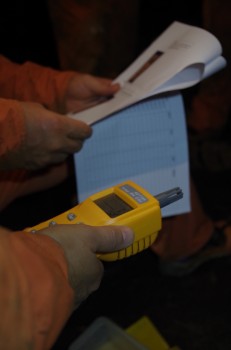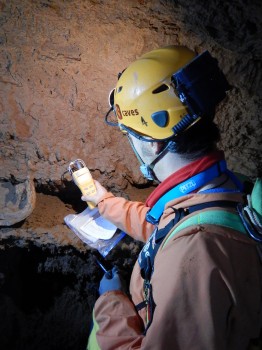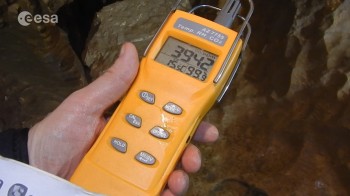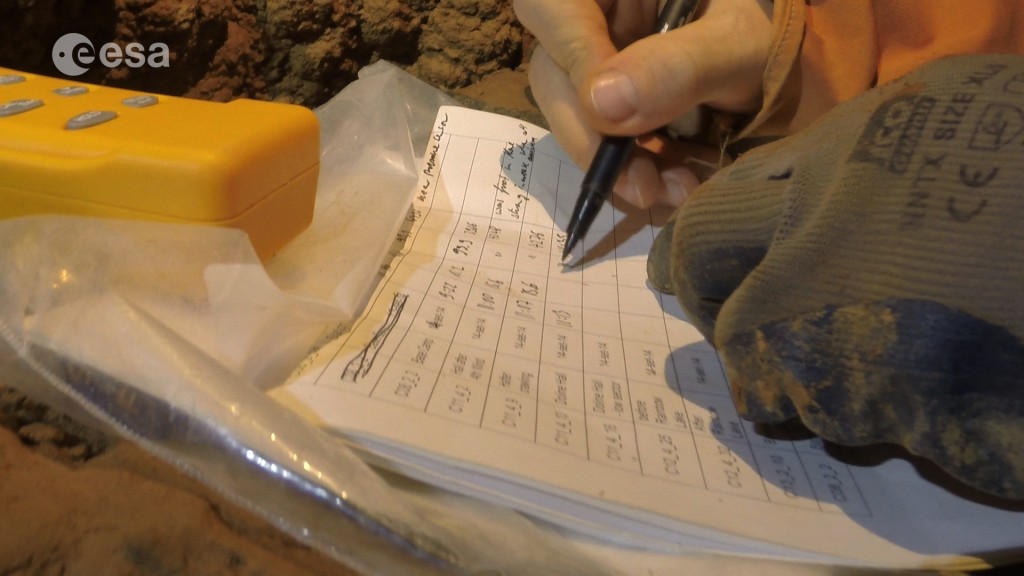Monitoring CO2 in caves
CO2 is the most infamous greenhouse gas. The air that we breathe on Earth has concentrations of around 390 parts per million (0,039 %). In caves CO2 is found in higher concentrations because it degasses from infiltrating waters or is produced by decomposing organic compounds. Its slow diffusion makes concentrations in caves reach 10,000 parts per million (1 %) easily.
CO2 is an important gas for caves as it is involved in the chemical reactions that govern carbonate rock dissolution and speleothem formation, and it is used as a natural-gas tracer in cave ventilation processes.
CO2 levels in the cave’s atmosphere is measured with a handheld detector (ENV-CO2 CO2 sensor) at different locations to understand speleothem formation and ventilation in the Sa Grutta cave system.
Operational scenario
 CO2 measurements are performed at pre-defined locations, several times a day. The handheld CO2 measurement unit able to measure concentrations up to 10,000 ppm.
CO2 measurements are performed at pre-defined locations, several times a day. The handheld CO2 measurement unit able to measure concentrations up to 10,000 ppm.
Once the instrument is turned on it should be left measuring for 1 minute (it will beep after 30 seconds, but it is advisable to wait for another 30 seconds in order for the instrument to stabilise). Readings update every second.
Pressing the ‘hold’ button freezes measurements. This allows recording a measurement in the ENV-CO2 table. Temperature and relative humidity are also measured and must be recorded in the same table.
Things to keep in mind
Handling the CO2 measurement unit.
The sensor on the CO2 measurement unit (it looks like an antenna on top) is very delicate and, although protected by a metal frame must be handled with care.
Please note that measurements are influenced by human breathing, so the instrument must be placed on the ground at least 2 meters away from any person.
CO2 behaviour.
CO2 concentrations in caves are mainly influenced by degassing from incoming water (dripwater), and thus change with the seasons. High concentrations are also related to decomposing organic material.
The campsite and, in general, the highest points of a cave, show the highest concentrations in CO2, while the lake gallery, with lower organic material and farther away from where dripwater enters the cave (i.e. the roof), typically shows lower values.
Prof. Jo De Waele, University of Bologna, CAVES science coordinator
Dr. Laura Sanna, Institute for Biometeorology, Sassari, scientist responsible for the CAVES environmental science experiments




Discussion: 5 comments
Is there an article with guidelines on how to take and interpret Co2- O2 measurement in caves?
I’mminterested In taking on a project as part of a Cave Conservation Committee.
I have developed a CO2 data logger specifically designed for cave monitoring, it also incorporates temperature, humidity and pressure logging together with a real time clock.
It is designed to log data for over a year with it’s own internal battery set. All data is stored on a micro SD card sealed from any humidity.
The unit is small and robust and designed to be roughly treated.
Please Email for further information.
We are looking for such a CO2-Logger for cave environment, the idea is to collect data of annual CO2
variations in caves of southern Germany.
Can you provide information on your data logger?
kind regards,
Jochen
No way! How does it work?
Hi Antony
This CO2 logger sounds very interesting, are you still working on this.
I am looking for something like this for a monitoring project in Hölloch, Switzerland, one of the longest caves.
Any hints, especially sensor and micro-controller, would be highly appreciated.
Best, Martin